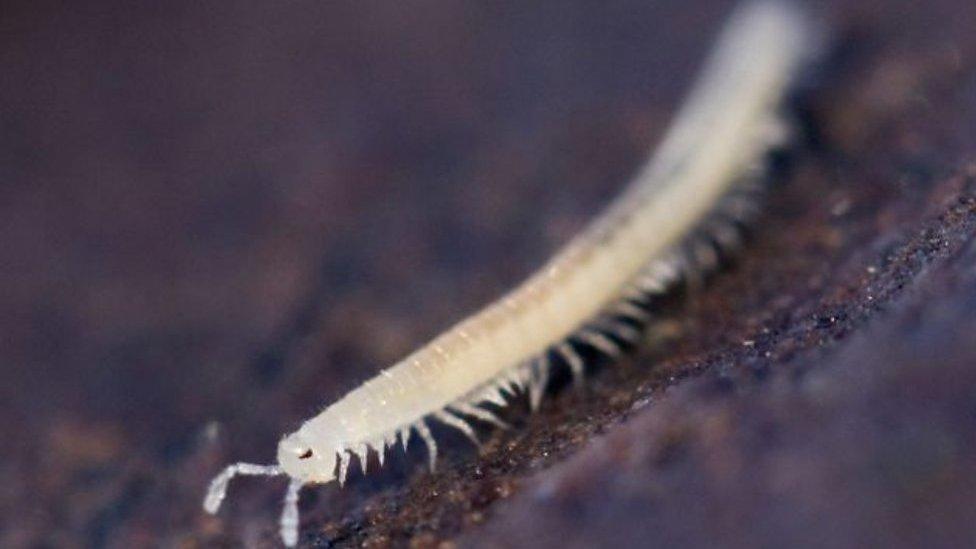'Plague' of midges invades Cardiff Bay waterfront
- Published
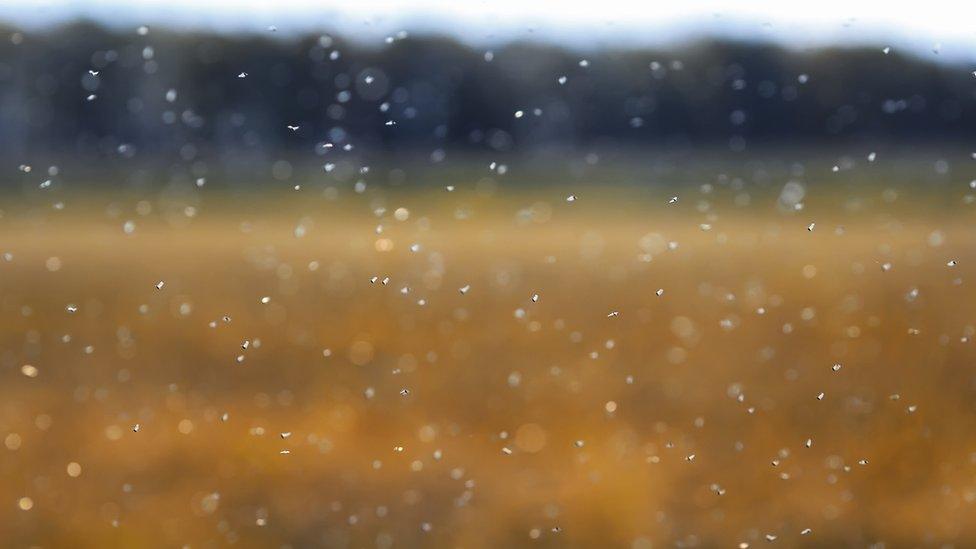
The midges do not bite, but can swarm in large numbers
Midges are causing misery to residents and visitors trying to enjoy the warmer weather in Cardiff Bay.
Swarms of the tiny insects have disrupted people living near the city's waterfront development.
The enclosure created by the barrage in 1994 is the largest man-made freshwater lake in Europe, but it provides "a perfect breeding ground" for midges.
Cardiff council said that based on activity in previous years, the midges will not be around for long.
One resident of Cardiff Bay said he had been forced to put up mosquito nets at his windows.
"They're everywhere. It's annoying any time, but in lockdown it's been much worse. It's like a plague," Imad Ali, 44, said.
"Whenever I open the door, they fly into the house - my kitchen ceiling was covered in them last night.
"I had a barbecue in the garden with my girlfriend at the weekend and they were flying around us so much we gave up and went indoors to eat.
"I've put mosquito nets up at the bedroom windows for when I want to open the windows in case they come flying in."
'A small black hazy cloud'
Midges, or chironomids as they are known, do not bite, but can swarm in large numbers.
Cardiff University associate professor Dr Rhys Jones, an entomologist, author and presenter of the BBC's Rhys Jones's Wildlife Patrol, said: "I live in Cardiff Bay myself, and I've noticed an increase in midges in the last few days as they emerged in their thousands.
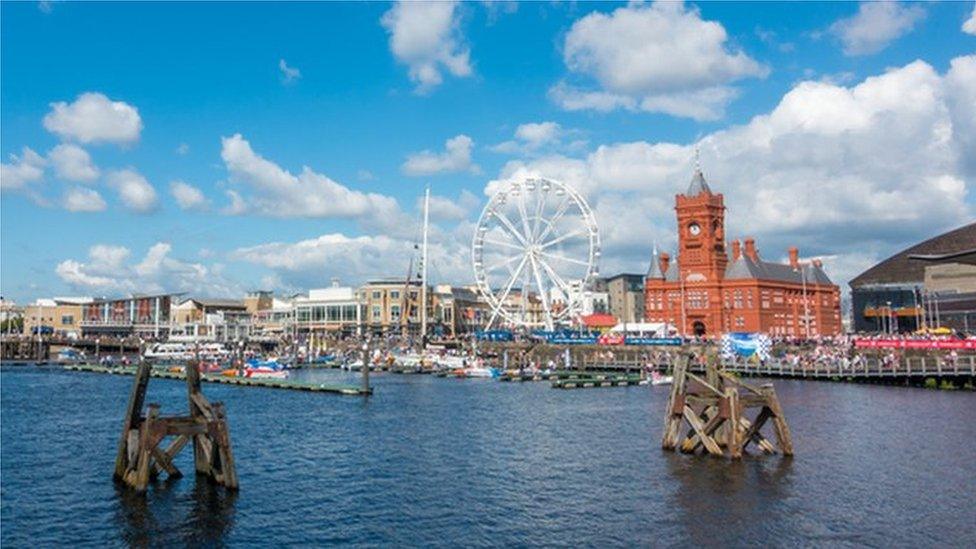
Cardiff Bay is a great spot to enjoy a stroll - but walkers have been blighted by swarms of midges
"It all stems back to when the Cardiff Bay barrage was created back in 1994. The development changed a naturally brackish estuary habitat into a body of freshwater, the perfect breeding ground for the midges.
"Cardiff Bay is host to non-biting midges, but if you stand still long enough, they often envelop you like a small black hazy cloud. So, although not dangerous, they can be annoying if you are trying to enjoy a takeaway coffee on the pierhead.
"We have just come out of a cold snap and into a much warmer period of weather. This is the environmental signal the midges have been waiting for to metamorphose from their aquatic larvae form and into the flying insects we can see in the Bay today.
"They will not risk emerging into adults during cooler conditions, so as soon as the weather warms up, they emerge en-masse!"
A Cardiff council spokesperson said: "Non-biting midges are a common natural occurrence in environments such as Cardiff Bay, normally emerging en-masse at around the same time every year, when the weather turns warmer after a cold spell.
"These midges are harmless to humans and form an important part of the ecosystem of Cardiff Bay, providing valuable food for birds and bats - this is reflected in changes to biocide legislation which now means that the use of larvacide to limit numbers is not an option in this environment. Midges have a very limited lifespan and data gathered over the last 20 years shows that these events are short-lived."
Related topics
- Published25 April 2020

- Published10 June 2019
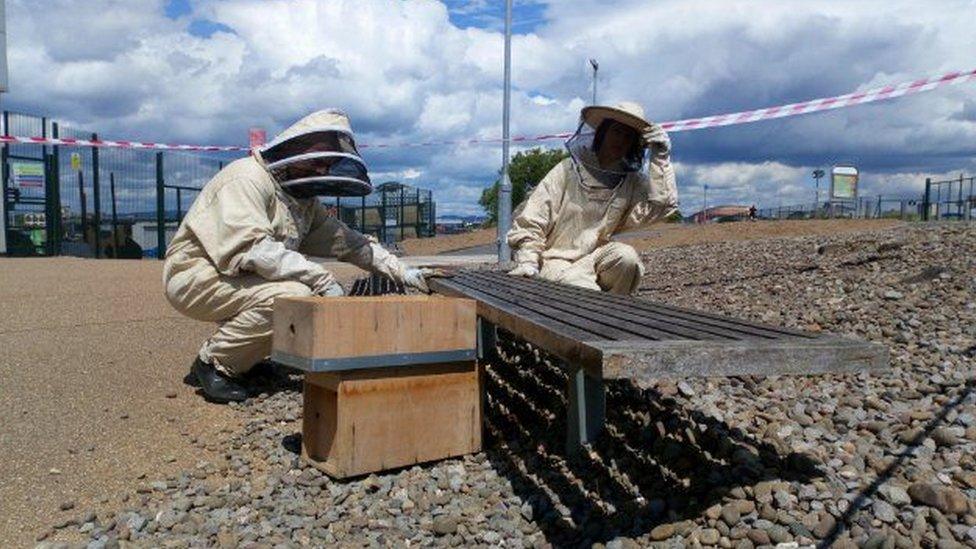
- Published6 September 2020

- Published18 February 2020

- Published5 June 2018
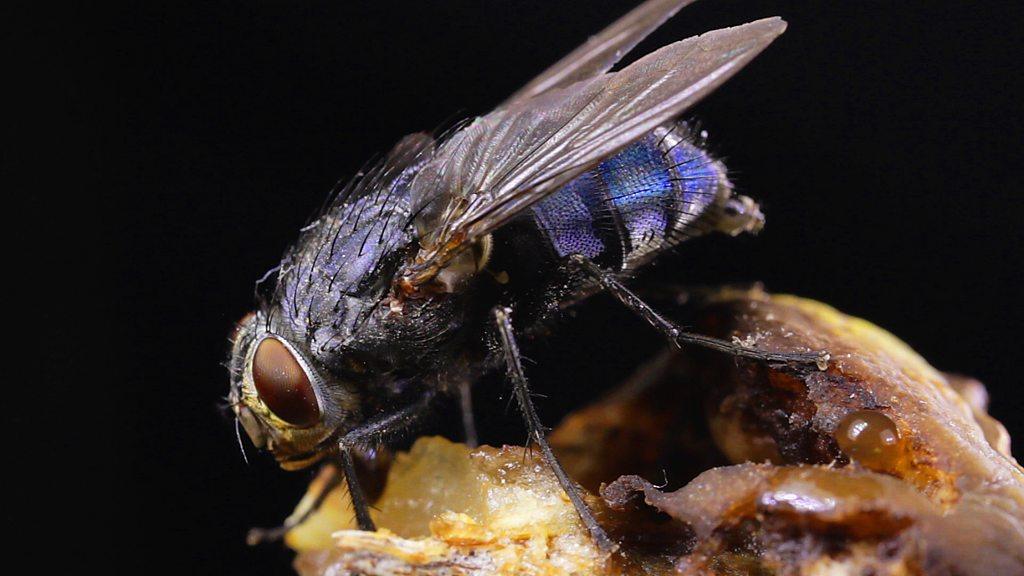
- Published3 April 2020

- Published24 April 2019
